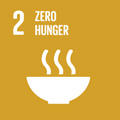- Docente: Gerardo Manfreda
- Credits: 6
- SSD: VET/04
- Language: Italian
- Moduli: Gerardo Manfreda (Modulo Mod 1) Frederique Pasquali (Modulo Mod 2)
- Teaching Mode: Traditional lectures (Modulo Mod 1) Traditional lectures (Modulo Mod 2)
- Campus: Cesena
- Corso: First cycle degree programme (L) in Food Technology (cod. 8528)
-
from Feb 18, 2025 to Apr 09, 2025
-
from Apr 15, 2025 to May 21, 2025
Learning outcomes
During the course the student will know the national and European legislation concerning food safety useful to assess the biological and chemical hazards associated with the consumption of animal products.
The student will acquire general knowledge on
- the effect of animal food handling on foodborne pathogens risk.
- how to develop different HACCP protocols to control the safety risk in food animal industry.
- sampling protocols to improve the risk assesment on animal food product
- epidemiology approach to estimate the foodborne disease
- environmental hygiene
Course contents
Module 1
European legislation on food hygiene and safety: reg. 178, hygiene package and regulatrion 2073/2005.
Food analysis aimed at food safety: sampling methods and analytical methodologies
Note on Epidemiological studies: Incidence and Prevalence. Risk factors.
Foodborne illness: the dimension of national and international problem.
Inspection in the meat chain: Ante and post mortem inspection during the slaughtering.
The different food chain in animal production and related foodborne disease.
Chemical contamination (e.g. veterinary residues) of foods of animal origin.
HACCP and examples of application
Module 2
EN / ISO standards for the detection and quantification of Salmonella, Listeria monocytogenes, Escherichia coli, Cronobacter, Staphylococcal Enterotoxins and Histamine
EN / ISO standards for the quantification of aerobic colonies, Enterobacteriaceae, Coagulase positive staphylococci, Campylobacter, Bacillus cereus
Rapid molecular methods for the determination of foodborne bacteria in food
DNA extraction from microorganisms and food matrices
Polymerase Chain Reaction and agarose gel electrophoresis
Principles and characteristics of the main sequencing methods
Readings/Bibliography
- Notes of lectures
- ICMSF:Microorganisms in Foods 7: Microbiological Testing in Food Safety Management. Kluwer Academic/Plenum Publisher 2002
- Microorganisms in Foods 2: Sampling for Microbiological Analysis: Principles and Specific Applications (1986)
- PALESE L., PALESE A.: Il controllo sanitario e qualitativo dei prodotti alimentari della pesca, Piccin Editore.
- GRACEY J. F., COLLINS D.S., Huey R. J. Meat Hygiene, 10a ed. Saunders Ltd
Teaching methods
Oral lectures, scientific seminary, didattical visits to industries
Assessment methods
The course is part of the course Biology of microorganisms and Food Inspection, which also includes the teaching of Biology of Microorganisms. The final vote consists of the synthesis of evaluations of 2 courses that make up the integrated course. Of the examination commission are part the professors in charge of the teachings that make up the integrated course.
The assessment of learning is through an oral examination.
The oral examination is intended to verify the knowledge relating to the risk management in the food sector according to the program of the course. The final vote, takes account of estimates reported in both trials.
Teaching tools
projector, computer, over head display, instruments of microbiological laboratory
Office hours
See the website of Gerardo Manfreda
See the website of Frederique Pasquali
SDGs


This teaching activity contributes to the achievement of the Sustainable Development Goals of the UN 2030 Agenda.
